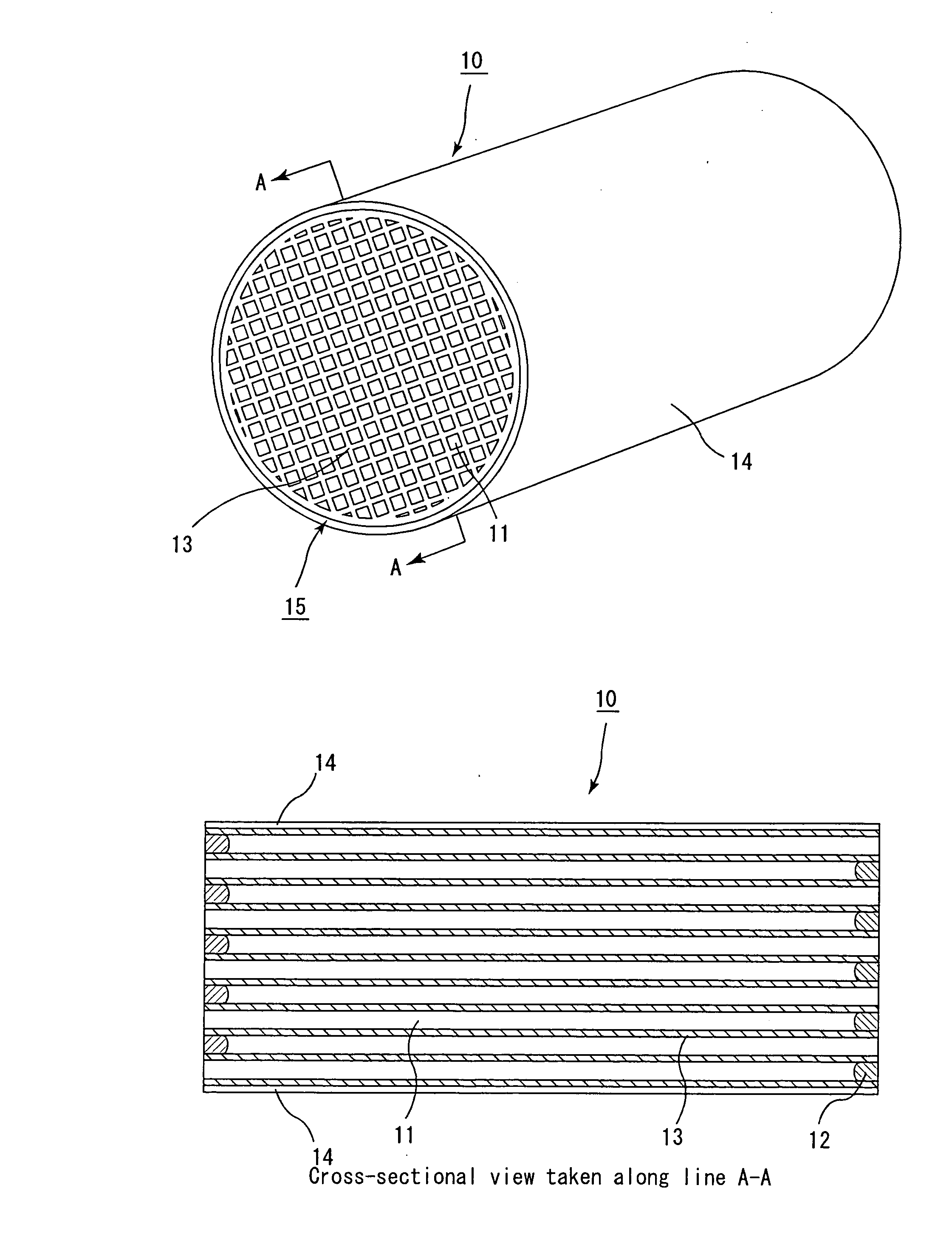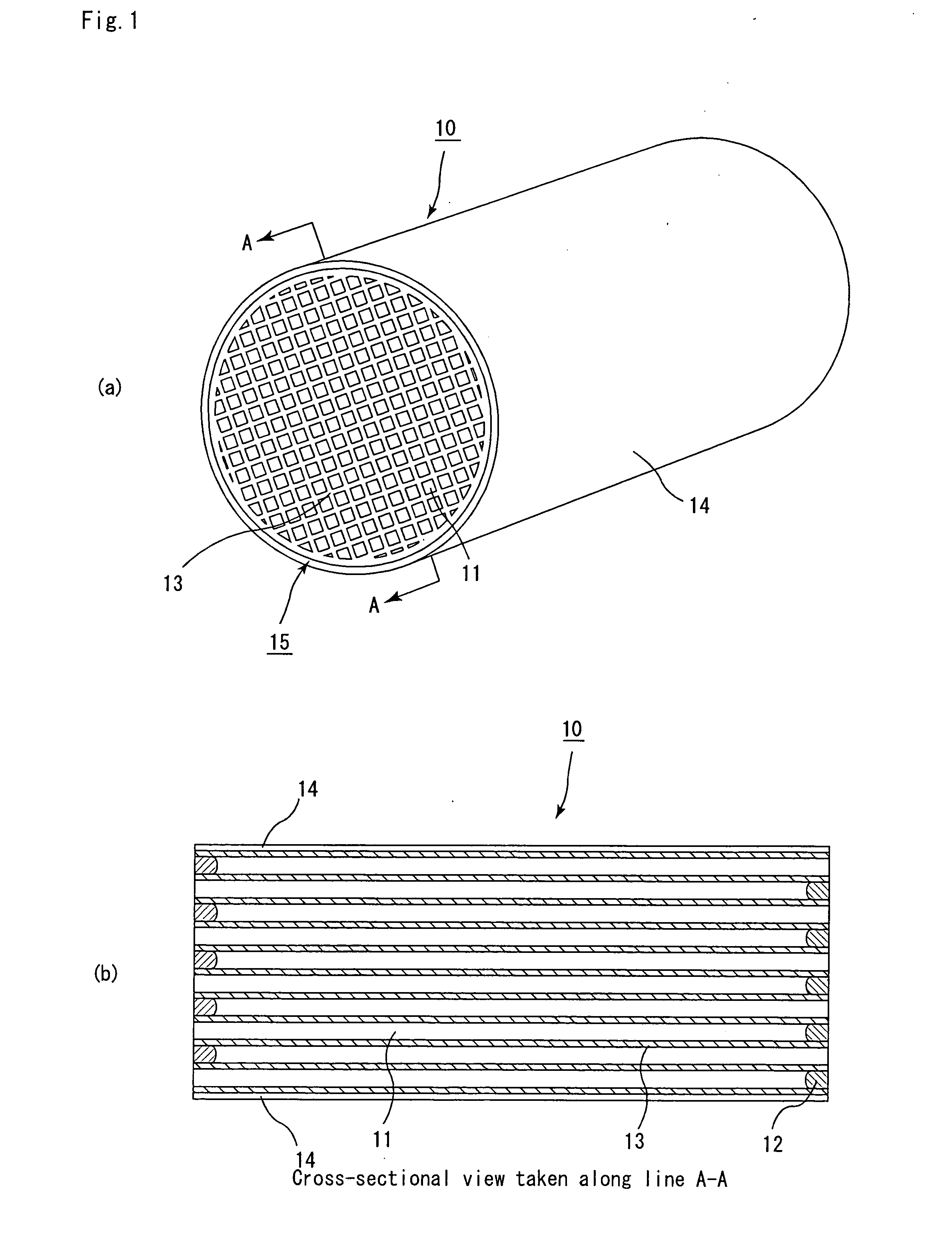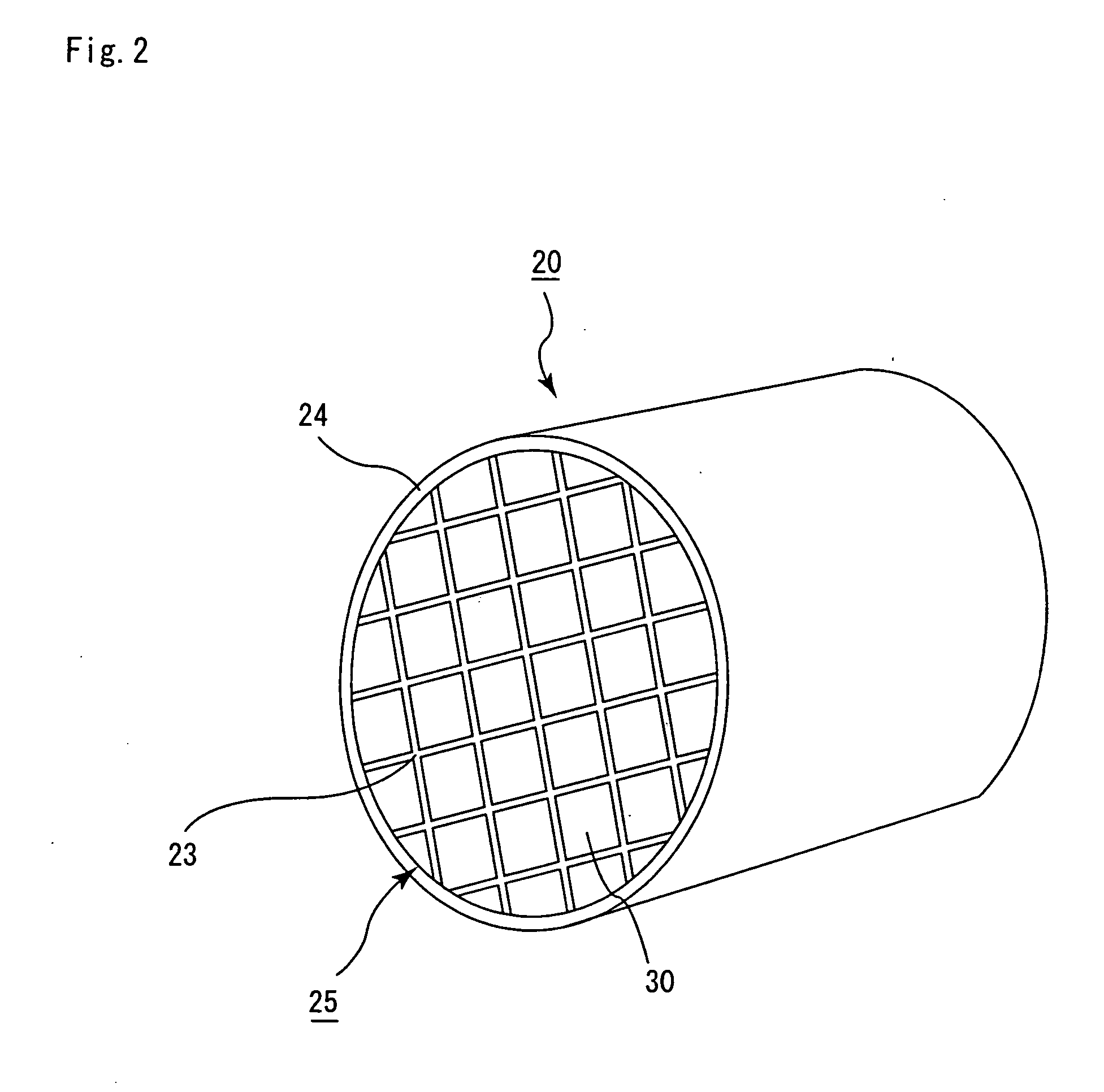Honeycomb filter for purifying exhaust gas
a technology of exhaust gas and honeycomb, which is applied in the direction of catalyst activation/preparation, metal/metal-oxide/metal-hydroxide catalyst, etc., can solve the problems of affecting the operation of the honeycomb filter, the failure of conventional honeycomb filters to sufficiently decompose and eliminate organic components, and the problem of exhaust gases discharged from the internal combustion engine of the vehicl
- Summary
- Abstract
- Description
- Claims
- Application Information
AI Technical Summary
Benefits of technology
Problems solved by technology
Method used
Image
Examples
example 1
[0159] (1) Talc having an average particle size of 10 μm (40 parts by weight), kaolin having an average particle size of 9 μm (10 parts by weight), alumina having an average particle size of 9.5 μm (17 parts by weight), aluminum hydroxide having an average particle size of 5 μm (16 parts by weight), silica having an average particle size of 10 μm (15 parts by weight) and a molding auxiliary (ethylene glycol) (6 parts by weight) were added to 16 parts by weight of water, and mixed and kneaded to prepare a material paste.
[0160] Next, the above-mentioned material paste was loaded into an extruder, and extruded at an extrusion rate of 10 cm / min so that a ceramic formed body having almost the same shape as the honeycomb filter 10 shown in FIG. 1 was formed, and the ceramic formed body was dried by a microwave drier, and predetermined through holes were then filled with a paste having the same composition as the material paste, and after this had been again dried by using a drier, this w...
example 2
[0165] First, the same processes as those of (1) and (2) of Example 1 were carried out to produce a honeycomb structural body.
[0166] Then, the above-mentioned honeycomb structural body was heated at 600° C. in an oxygen atmosphere for 60 minutes so that a honeycomb filter having a structure in that the rate Sα of the area occupied by the sealing material layers to the total area of a cross-section including the through holes in the direction perpendicular to the through holes was 1.4%, with the rate Vα of organic components being set to 0.10% by weight, was manufactured.
example 3
[0167] First, the same processes as those of (1) and (2) of Example 1 were carried out to produce a honeycomb structural body.
[0168] Then, the above-mentioned honeycomb structural body was heated at 500° C. in an oxygen atmosphere for 30 minutes so that a honeycomb filter having a structure in that the rate Sα of the area occupied by the sealing material layers to the total area of a cross-section including the through holes in the direction perpendicular to the through holes was 1.4%, with the rate Vα of organic components being set to 0.20% by weight, was manufactured.
PUM
| Property | Measurement | Unit |
|---|---|---|
| length | aaaaa | aaaaa |
| length | aaaaa | aaaaa |
| length | aaaaa | aaaaa |
Abstract
Description
Claims
Application Information
 Login to View More
Login to View More - R&D
- Intellectual Property
- Life Sciences
- Materials
- Tech Scout
- Unparalleled Data Quality
- Higher Quality Content
- 60% Fewer Hallucinations
Browse by: Latest US Patents, China's latest patents, Technical Efficacy Thesaurus, Application Domain, Technology Topic, Popular Technical Reports.
© 2025 PatSnap. All rights reserved.Legal|Privacy policy|Modern Slavery Act Transparency Statement|Sitemap|About US| Contact US: help@patsnap.com



